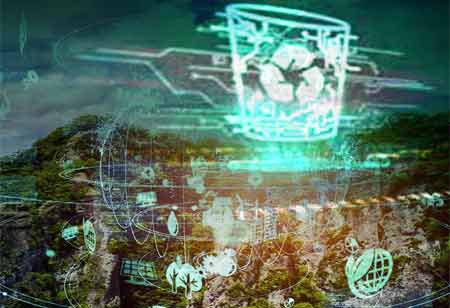Thank you for Subscribing to Agri Business Review Weekly Brief
The Role Of Machine Learning In Agriculture
Arthur Samuel stunned the world in 1962. He created a computer capable of challenging Robert Nealy, the reigning checkers champion.

By
Agri Business Review | Thursday, February 11, 2021
Stay ahead of the industry with exclusive feature stories on the top companies, expert insights and the latest news delivered straight to your inbox. Subscribe today.
Technology is more crucial than anything else when imagining the future. Agriculture machine learning is not a magic trick but a set of well-defined models that collect certain data and apply particular methods to accomplish desired results.
FREMONT, CA: Arthur Samuel stunned the world in 1962. He created a computer capable of challenging Robert Nealy, the reigning checkers champion. The machine triumphed, but it was not the victory that garnered headlines. It was the software that enabled success that would alter the course of history.
Today, the same principles of "machine learning" (ML) that Samuel exploited in his early studies are applied in virtually every subject—including one that is not frequently connected with the advent of artificial intelligence (AI).
Utilizing data to increase efficiency in growth: Plant breeders are continuously on the lookout for desirable characteristics. They hunt for features that enable farmers to grow crops more efficiently and less natural resource consumption. However, researchers must identify the correct gene sequence for a plant to inherit a favorable factor. However, which sequence is the correct one is initially a mystery.
Deep learning algorithms may take a decade's worth of raw field data—such as insights into how crops have behaved in various climates or how they have inherited particular features—and use it to build a probability model. ML can use this data to identify which genes are most likely to produce favorable features. Digital technologies and advanced software significantly restrict the search among the millions of possible combinations.
Experimenting with what is possible on the land: Plant breeding is becoming more accurate, efficient, and capable of analyzing a broader set of variables using ML. Scientists are doing early studies on how a variety may function when exposed to various sub climates, soil types, weather patterns, and other factors. While this computerized testing does not replace traditional field trials, it enables plant breeders to make more precise predictions about crop performance. By the time a new variety hits the soil, ML has aided breeders in producing a product that has been extensively evaluated.
Identifying solutions through patterns: Early and correct identification is critical when tracking any disease. Visual examination is the traditional way of determining plant disease. This technique, however, can be inefficient and prone to human error. Diagnosing plant disease is essentially pattern recognition for a trained computer. After sifting through hundreds of thousands of images of damaged plants, an ML system can determine the type and severity of the disease, as well as a variety of other factors.
ML enables more precise disease diagnosis in agriculture while conserving energy and avoiding false data. Farmers can upload field photos captured by satellites, unmanned aerial vehicles (UAVs), land-based rovers, smartphones, and tools to identify potential agricultural issues and offer a management strategy.





